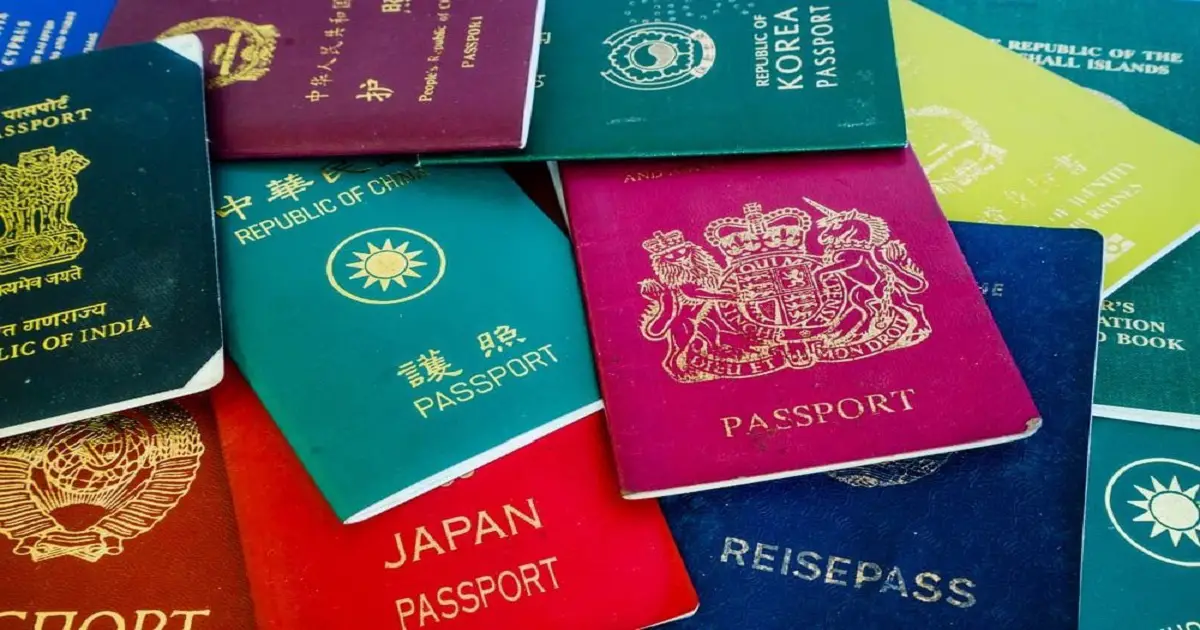Why Passports Only Come in Four Colors

source: CHINTUNG LEE/SHUTTERSTOCK
Passports are those nifty little booklets that let you explore the world and go on amazing adventures. But have you ever wondered why passports only come in four colors: blue, green, red, or black? Well, let’s take a closer look at this colorful mystery and find out why!
Passport Colors – No Hard Rules, but Some Norms
First things first, there are no official rules that say a passport must be a specific color. It’s not like a traffic light where red means stop and green means go. However, countries around the world tend to follow some unspoken rules when it comes to designing passports.
Fonts, Materials, and Machines
Passports have to follow some special rules when it comes to fonts and materials. They use a specific typeface, type size, and font for official documents like passports. That’s so the writing is clear and easy to read. And passports need to be made out of a material that can bend without creasing. This helps keep your passport looking good even after it’s been on a few adventures.
But here’s something you might not know: passports need to be read by a machine. These machines are pretty smart, but they work best at temperatures ranging from 14 to 122°F. So passports have to be made with materials that can handle these temperature extremes.
Dark Colors are Official and Practical
Ever notice that passports are usually dark colors? Well, there’s a good reason for that. Dark colors like blue, green, and black look official and important. They give off a serious vibe, which is perfect for an important document like a passport. Plus, dark colors can hide dirt and wear and tear, so your passport stays looking neat even if it takes a few bumps on your travels.

Colors with Meaning
Now, let’s talk about some passport colors with special meanings. In Islamic countries, green passport covers are quite common. Green is an important color in Islam, symbolizing nature and life. So, it’s only fitting that their passports reflect this important aspect of their culture.
If you head over to West Africa, you’ll find that member countries of ECOWAS (the Economic Community of West African States) use various shades of green for their passports, too. It’s a way to show unity and cooperation among these countries.
Burgundy for European Unity
Now, let’s hop over to Europe. Members of the European Union (EU) use burgundy-colored passports. Why burgundy? Well, it’s a color associated with the EU, representing unity and cooperation among European countries. And even countries that want to join the EU, like Turkey, use burgundy-colored passports to show their aspirations for European integration.
The Star-Spangled Blue
If you’re from the United States, you’re probably familiar with the blue passport cover. But it wasn’t always this way. The U.S. actually experimented with different passport colors over the years. They tried red, green, and black. But in 1976, they finally settled on blue, and there’s a good reason why.
The blue color of the U.S. passport matches the American flag. It’s a symbol of patriotism and a reminder of the stars and stripes. So, the next time you pull out your blue U.S. passport, you can proudly think of the American flag and all the adventures that await you.
While there are no strict rules about passport colors, there are some common trends and meanings behind the choices. Dark colors are practical and look official, while certain colors hold cultural or political significance. So, whether your passport is blue, green, red, or black, it’s your ticket to explore the world and experience new adventures!